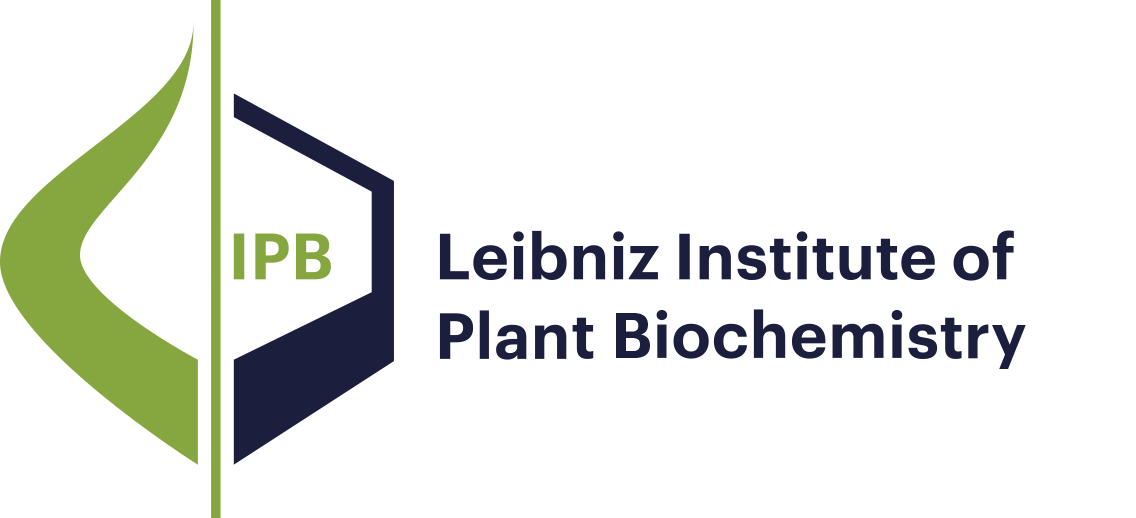- Results as:
- Print view
- Endnote (RIS)
- BibTeX
- Table: CSV | HTML
Publications
Publications
Research Mission and Profile
Molecular Signal Processing
Bioorganic Chemistry
Biochemistry of Plant Interactions
Cell and Metabolic Biology
Independent Junior Research Groups
Program Center MetaCom
Publications
Good Scientific Practice
Research Funding
Networks and Collaborative Projects
Symposia and Colloquia
Alumni Research Groups
Publications
Lipoxygenases are key enzymes in the synthesis of oxylipins and play an important role in the response of plants to wounding and pathogen attack. In cultured potato cells treated with elicitor from Phytophthora infestans, the causal agent of late blight disease, transcripts encoding a linoleate 9-lipoxygenase and a linoleate 13-lipoxygenase accumulate. However, lipoxygenase activity assays and oxylipin profiling revealed only increased 9-lipoxygenase activity and formation of products derived therefrom, such as 9-hydroxy octadecadienoic acid and colneleic acid. Furthermore, the 9-lipoxygenase products 9(S),10(S),11(R)-trihydroxy-12(Z)-octadecenoic and 9(S),10(S),11(R)-trihydroxy-12(Z),15(Z)-octadecadienoic acid were identified as novel, elicitor-inducible oxylipins in potato, suggesting a role of these compounds in the defense response against pathogen attack. Neither 13-lipoxygenase activity nor 13-lipoxygenase products were detected in higher amounts in potato cells after elicitation. Thus, formation of products by the 9-lipoxygenase pathway, including the enzymes hydroperoxide reductase, divinyl ether synthase, and epoxy alcohol synthase, is preferentially stimulated in cultured potato cells in response to treatment with P. infestanselicitor. Moreover, elicitor-induced accumulation of desaturase transcripts and increased phospholipase A2 activity after elicitor treatment suggest that substrates for the lipoxygenase pathway might be provided by de novo synthesis and subsequent release from lipids of the endomembrane system.
Publications
Hydroxycinnamoyl-CoA : tyramine N-(hydroxycinnamoyl) transferase (THT) is a pivotal enzyme in the synthesis of N-(hydroxycinnamoyl)-amines, which are associated with cell wall fortification in plants. The cDNA encoding THT was cloned from the leaves of UV-C treated Capsicum annuum (hot pepper) using a differential screening strategy. The predicted protein encoded by the THT cDNA is 250 amino acids in length and has a relative molecular mass of 28,221. The protein sequence derived from the cDNA shares 76% and 67% identity with the potato and tobacco THT protein sequences, respectively. The recombinant pepper THT enzyme was purified using a bacterial overexpression system. The purified enzyme has a broad substrate specificity including acyl donors such as cinnamoyl-, sinapoyl-, feruloyl-, caffeoyl-, and 4-coumaroyl-CoA and acceptors such as tyramine and octopamine. In UV-C treated plants, the THT mRNA was strongly induced in leaves, and the elevated level of expression was stable for up to 36 h. THT mRNA also increased in leaves that were detached from the plant but not treated with UV-C. THT expression was measured in different plant tissues, and was constitutive at a similar level in leaf, root, stem, flower and fruit. Induction of THT mRNA was correlated with an increase in THT protein.

